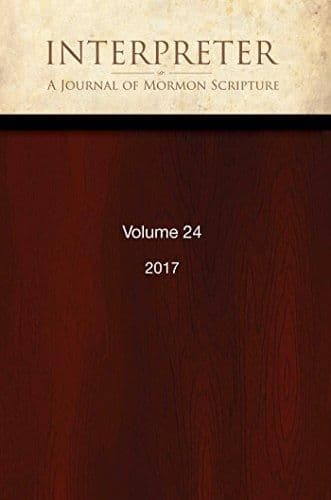Journal
The Dance of Reader and Text: Salomé, the Daughter of Jared, and the Regal Dance of Death

Title
The Dance of Reader and Text: Salomé, the Daughter of Jared, and the Regal Dance of Death
Publication Type
Journal Article
Year of Publication
2023
Authors
Goff, Alan (Primary)
Journal
Interpreter: A Journal of Latter-day Saint Faith and Scholarship
Pagination
1–52
Volume
57
Abstract
Modern readers too often and easily misread modern assumptions into ancient texts. One such notion is that when the reader encounters repeated stories in the Bible, the Book of Mormon, Herodotus, or numerous other texts, the obvious explanation that requires no supporting argument is that one text is plagiarizing or copying from the other. Ancient readers and writers viewed such repetitions differently. In this article, I examine the narratives of a young woman or girl dancing for a king with the promise from the ruler that whatever the dancer wants, she can request and receive; the request often entails a beheading. Some readers argue that a story in Ether 8 and 9, which has such a dance followed by a decapitation, is plagiarized from the gospels of Mark and Matthew: the narrative of the incarceration and death of John the Baptist. The reader of such repeated stories must study with a mindset more sympathetic to the conceptual world of antiquity in which such stories claim to be written. Biblical and Book of Mormon writers viewed such repetitions as the way God works in history, for Nephi asserts that “the course of the Lord is one eternal round” (1 Nephi 10:19), a claim he makes barely after summarizing his father’s vision of the tree of life, a dream he will repeat, expand upon, and make his own in 1 Nephi chapters 11–15 (and just because it is developed as derivative from his father’s dream in some way, no reader suggests it be taken as a plagiaristic borrowing). Nephi’s worldview is part of the shared mental system illustrated by his eponymous ancestor — Joseph, who gave his name to the two tribes of Joseph: Ephraim and Manasseh, the latter through which Lehi traced his descent (Alma 10:3) — for youthful Joseph boasts two dreams of his ascendance over his family members, interprets the two dreams of his fellow inmates, and articulates the meaning of Pharaoh’s two dreams, followed by his statement of meaning regarding such repetitions: “And for that the dream was doubled unto Pharaoh twice; it is because the thing is established by God, and God will shortly bring it to pass” (Genesis 41:32).
Subject Keywords
Bibliographic Citation
Terms of use
Items in the BMC Archive are made publicly available for non-commercial, private use. Inclusion within the BMC Archive does not imply endorsement. Items do not represent the official views of The Church of Jesus Christ of Latter-day Saints or of Book of Mormon Central.